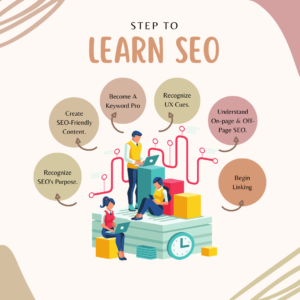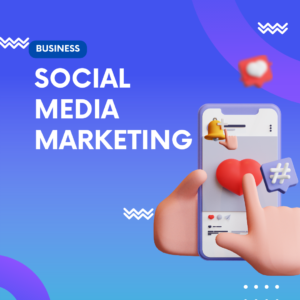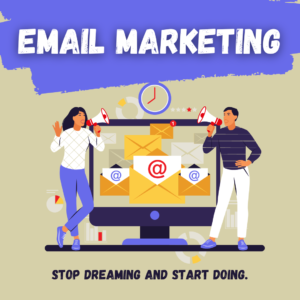Hi guys today I will share with you 5 Pillars of Digital Marketing that helps to increase your business exponentially. Digital marketing is a key component of every company’s expansion in the current digital era. It includes a broad variety of tactics and strategies that support businesses in selling their goods and services online. We can break down digital marketing into a number of crucial pillars to have a better understanding of how it functions. These pillars of digital marketing serve as the foundation of a successful digital marketing plan. In this article, we will explore these pillars and their significance in achieving online success. So, let’s dive in and discover the key elements that drive effective digital marketing!
5 Pillars of Digital Marketing
Pillar 1: Search Engine Optimization
SEO is an important pillar of Digital marketing it is also referred to as search engine optimization, is an important component of digital marketing. It entails optimizing a website to raise its standing on search engine result pages (SERPs) and increase its visibility. By using a variety of tactics, such as keyword research, on-page optimization, and off-page optimization, SEO tries to draw organic visitors.
Importance of SEO
Nowadays importance of SEO increase day by day because the online market become more competitive also everyone wants more sales and traffic on his websites. SEO helps increase website visibility, organic traffic, and brand credibility. By optimizing content and website structure, businesses can improve their chances of appearing on the first page of search results, driving targeted traffic to their website.
On-Page SEO
On-page SEO means optimizing web content to gain a high ranking on Google. It helps increase the ranking by around 70% on your web page. It involves optimizing meta tags, headings, content, and URLs. Proper keyword usage, content quality, and user-friendly website design contribute to on-page SEO success.
Off-Page SEO
Off-page SEO refers to activities performed outside the website to enhance its online reputation and authority. This includes building high-quality backlinks, social media mentions, influencer collaborations, and guest blogging. Off-page SEO helps improve search engine rankings and increases brand visibility.
Pillar 2: Social Media Marketing
The finest venue for connecting with your business’s target market is social media. Social is very important for our business it helps to increase our brand credibility and sales. Social media marketing utilizes various platforms to engage, build relationships, and promote products or services. There are many social media platforms like Instagram, Youtube, Facebook, Linkedin, etc.
The Power of Social Media
Social media is one of the important pillars of digital marketing which are necessary for every business, nowadays social media has become an important part of our life, with its help we can get information from anywhere sitting at home, and it has allowed us to talk, share things and Changed the way of connecting with people, at present there are a billion users on social media, who do it, it also gives people a chance to keep their point.
Creating Engaging Content
A strong platform for producing interesting content is social media. It offers a platform where people, organizations, and influencers can exchange interesting tales, images, videos, and more. The secret to producing interesting material for social media is to draw viewers in and pique their curiosity. This can be accomplished through posts that are instructive and engaging, interactive polls or quizzes, eye-catching images, and provocative captions. Social media users can establish meaningful relationships, encourage discussions, and motivate action by recognizing their target audience and adapting material to their interests. Building a devoted following and gaining increased reach and effect on social media are made possible by having the ability to provide interesting content.
Influencer Marketing
Influential people on social media are used by brands as part of the well-liked influencer marketing approach to reach their target demographic. These influencers work with brands to advertise their goods or services because they have a sizable fan base and substantial power over their audience. Influencers are able to advocate and recommend products with effectiveness, increasing brand recognition and boosting sales by utilizing the authority and trust they have gained from their following. Brands can access a niche market through influencer marketing, establish more intimate connections with customers, and profit from influencers’ relatability and genuineness. Influencer marketing has become a potent technique for influencing consumer behavior and improving corporate success in the world of digital marketing. It has developed into a powerful method for brands to interact with their target market and have beneficial effects. Brands may influence consumer decisions by collaborating with social media influencers to benefit from their authority and trust. This tactic enables businesses to target niche markets, interact with customers more personally, and profit from the sincere bond that influencers have with their following. In the rapidly changing world of digital marketing, influencer marketing has become known as an innovator that offers major advantages to organizations.
Pillar 3: Content Marketing
In order to create and keep the attention of a clearly defined target audience, content marketing is a strategic strategy that focuses on producing and disseminating valuable, pertinent, and consistent material. By offering consumers information, entertainment, or education, it goes beyond typical advertising and establishes the business as a trustworthy source.
Businesses can benefit greatly from content marketing in a number of ways. First of all, it improves brand recognition and visibility. Businesses may reach a larger audience and establish a presence online by regularly creating and distributing useful content. This may then result in more users visiting and participating on your website.
Second, content marketing promotes client loyalty and engagement. Businesses become seen as reliable resources by consumers when they offer interesting and useful material. As a result, interactions and visits are more likely to occur again.
The ability to produce leads and conversions is the third benefit of content marketing. Businesses may attract qualified leads who are more likely to become paying customers by developing content that is in line with the demands and interests of the target audience.
Content marketing also contributes to the development of industry authority and credibility. Businesses establish themselves as authorities and thought leaders in their industry when they regularly provide high-quality content that addresses the problems of their target audience.
Search engine optimization (SEO) also heavily relies on content marketing. Businesses may increase their search engine results and make it simpler for potential consumers to find them by producing pertinent and optimized content.
Creating Valuable Content
For a number of reasons, producing great material for your post is crucial. First off, readers may actually benefit from your valuable content. By providing insightful and practical content, you establish yourself as a trustworthy and dependable source of knowledge. As a result, your audience will regard you more favorably. This increases your credibility.
Second, useful information makes you more distinctive from competitors. Offering distinctive and worthwhile insights helps you stand out in the crowded digital scene and draws more attention. It displays your knowledge and establishes you as a pioneer in your industry.
Third, engaging content encourages participation. Your audience is more inclined to interact with, share, and leave comments on your material if they believe it to be valuable. Your reach and internet presence both grow as a result.
Additionally, producing excellent content helps your SEO efforts. High-quality and pertinent material is valued by search engines, and as a result, it appears higher in search results. This means that quality content can increase the visibility of your website and draw in organic traffic.
Finally, useful material encourages repeat visits from your readers. Your readers will become devoted to your brand when you regularly deliver value. They’ll look forward to your new content and return often, which could eventually result in lasting connections and prospective commercial prospects.
Blogging and Guest Posting
There are several reasons why blogging and guest posting are vital. They first aid in creating your internet presence and brand for either your personal or professional life. You may demonstrate your knowledge, offer insights, and interact with readers by regularly posting useful content on your blog. You can broaden your readership and increase your reach by blogging as a guest on reputable websites.
Your search engine optimization (SEO) efforts are also aided by blogging and guest posting. Your website’s search engine rankings can be improved by consistently updating your blog with new and pertinent content. Guest posting on reputable websites offers worthwhile backlinks that further improve the SEO of your website.
Thirdly, blogging and guest posting encourage collaboration and networking. Connecting with industry influencers, thought leaders and possible collaborators can be accomplished through writing for other blogs or inviting guest bloggers to post for your site. This might result in profitable collaborations, more visibility, and fresh chances.
Additionally, blogging and guest posting let you interact with readers and get feedback. You can establish rapport with your readers through comments, shares, and discussions. You can also obtain insightful information and improve your content strategy.
Pillar 4:Email Marketing
Due to its many advantages, email marketing is a vital tool for organizations. First off, it makes it possible to speak directly with your intended audience. You can deliver tailored communications right to their inbox by gathering email addresses from interested parties. This open channel of contact enables you to establish bonds with and interact personally with your audience.
Second, email marketing gives you the chance to connect with more audiences. Email has a huge global user base, giving your marketing campaigns a broader audience. To customize your emails and make sure they are relevant to each recipient, you can segment your email list based on demographics, interests, or previous interactions.
Thirdly, email marketing is economical and provides a strong return on investment (ROI). Sending emails is less expensive than using traditional marketing channels, making it a viable alternative for companies of all sizes. You can assess the success of your campaigns and make data-driven improvements by monitoring metrics like open rates, click-through rates, and conversions.
Additionally, email marketing increases conversions and traffic to your website. You can encourage recipients to perform particular activities by inserting links to your website, merchandise, or promotions in your emails. Email marketing can efficiently increase traffic and boost conversions for any action, including buying something, signing up for a webinar, or downloading a resource.
Additionally, lead nurturing and customer loyalty are made possible via email marketing. Sending tailored and pertinent material to your subscribers will help you build connections over time by adding value, earning their trust, and fostering mutual understanding. This promotes customer retention, encourages repeat business, and raises customer lifetime value.
Building an Email List
For organizations, developing an email list is essential because of its enormous value and influence on marketing initiatives. An email list, first and foremost, enables direct and focused communication with your audience. You can directly contact interested parties to send them communications that are personalized and pertinent to their interests by collecting their email addresses. This openness will allow you to build relationships with your audience, gain their trust, and engage in more personal interactions.
Second, a captive audience that is genuinely interested in your offers is offered by an email list. These people have freely provided their email addresses, demonstrating their interest in your offerings. This implies that they are more likely to connect with your communications, which will increase open rates, click-through rates, and conversions.
Thirdly, having control over your marketing channels is possible with an email list. Your email list is yours; unlike social media platforms or search engine algorithms, which may alter their policies at any time. Because of your independence, you can reach your audience without relying on outside forces.
Additionally, an email list is a great resource for your company. It functions as a database of prospective clients, leads, and active fans. This tool can be applied to a range of marketing tasks, including promoting sales, spreading educational information, distributing surveys, and performing market research.
An email list also enables you to stay in your audience’s minds. You may keep a constant presence and strengthen your brand in your subscribers’ eyes by delivering helpful and interesting information on a regular basis. This broadens consumer knowledge of the brand, fosters client loyalty, and promotes repeat business.
Effective Email Campaigns
To create effective email campaigns, start by defining your campaign goals and target audience. Craft compelling subject lines that grab attention, and ensure your emails are visually appealing and mobile-friendly. Personalize your messages based on recipient data and segment your email list for targeted communication. Provide valuable and relevant content that resonates with your audience. Include clear call-to-action buttons and optimize your email for high deliverability. Test and analyze your campaigns to optimize open rates, click-through rates, and conversions. Continuously refine your strategies based on insights and feedback to create engaging and successful email campaigns.
Personalization and Automation
To create personalized and automated emails, start by collecting relevant data about your subscribers, such as their name, location, and purchase history. Use this data to personalize your emails with dynamic content, including personalized greetings and recommendations. Segment your email list based on specific criteria to send targeted messages to different groups. Utilize marketing automation tools to trigger emails based on specific actions or time intervals. Set up automated workflows that deliver a series of emails based on subscriber behavior. Continuously monitor and analyze the performance of your personalized and automated emails to optimize engagement and conversions. By implementing personalization and automation, you can deliver tailored and timely content that resonates with your audience, leading to stronger relationships and better results.
Pillar 5:Pay-Per-Click Advertising
Pay-per-click (PPC) advertising is crucial for digital marketing because it provides immediate visibility and exposure. By placing ads on search engine results pages or other relevant platforms, businesses can reach their target audience instantly. PPC allows precise targeting based on factors like location, demographics, and interests, ensuring ads are shown to the right people at the right time. Additionally, PPC offers measurable results, allowing businesses to track conversions, clicks, and other key metrics. With the ability to set budgets and control costs, PPC provides a cost-effective advertising solution that can drive website traffic, generate leads, and ultimately boost business growth.
Understanding PPC
To understand PPC (Pay-per-click) advertising, start by familiarizing yourself with the concept. PPC is an online advertising model where advertisers pay a fee each time their ad is clicked. Next, explore different platforms that offer PPC advertising, such as search engines and social media networks. Learn about keyword research and targeting to optimize your campaigns. Understand the importance of ad relevance, quality scores, and bidding strategies. Analyze and track the performance of your campaigns, making adjustments as needed. By gaining a thorough understanding of PPC, you can effectively leverage this advertising model to drive targeted traffic, increase brand visibility, and achieve your marketing goals.
Google Ads
Google Ads is a platform for online advertising that it established that enables companies to generate and display ads across partner platforms, websites, and search engine results pages. Pay-per-click (PPC) advertising is used, whereby businesses place bids on keywords related to their goods or services. Text advertisements, display ads, video ads, and other ad formats are all available through Google advertisements. It offers a wide range of targeting possibilities, enabling businesses to target their ideal customer base in accordance with their demographics, interests, and geography. Google Ads gives advertisers the ability to evaluate and optimize their campaigns for optimum success and return on investment thanks to its sophisticated analytics and tracking features.
Optimizing PPC Campaigns
To optimize PPC campaigns, start by conducting thorough keyword research to identify relevant and high-performing keywords. Create compelling ad copy that aligns with your target audience’s needs and desires. Continuously monitor and analyze your campaign’s performance, making data-driven adjustments to improve click-through rates and conversions. Refine your targeting parameters by using audience segmentation and location targeting. Regularly test and optimize your landing pages to ensure a seamless user experience. Use ad extensions to provide additional information and improve ad visibility. Implement conversion tracking to measure the effectiveness of your campaigns. By consistently optimizing your PPC campaigns, you can maximize your return on investment and drive better results for your business.
Conclusion
For organizations aiming to succeed in the digital age, the 5 pillars of digital marketing covered in this article—Search Engine Optimisation (SEO), Social Media Marketing, Content Marketing, Email Marketing, and Pay-Per-Click (PPC) Advertising—are crucial. While social media marketing helps establish brand trust and engagement, SEO aids in boosting website visibility and organic traffic. Businesses become reputable sources thanks to content marketing, which also increases leads and conversions. Direct and personalized engagement with the audience is made possible through email marketing, which promotes brand loyalty and boosts traffic. PPC advertising generates targeted visitors and quantifiable results right away, accelerating business expansion. Businesses may thrive online and grow rapidly in the cutthroat digital environment of today by wisely utilizing these pillars.
FAQ
AnsImportant skills for a digital marketer include:
- Strong communication and writing skills
- Knowledge of digital marketing strategies and tools
- Analytical and data-driven mindset
- Creativity and ability to generate engaging content
- Understanding of SEO and SEM principles
- Social media management and advertising skills
- Proficiency in data analysis and reporting
- Ability to stay updated with industry trends and technology
- Project management and multitasking abilities
- Strong problem-solving and critical-thinking skills.




